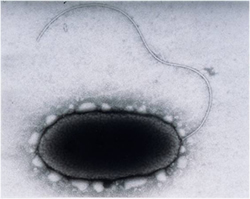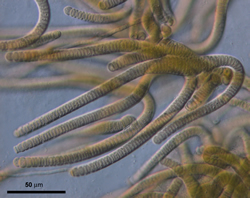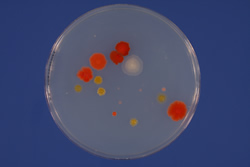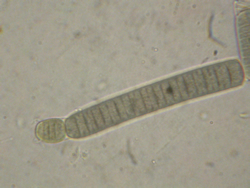Microbial life
 |
Bacteria and Archaea Bacteria and Archaea are the smallest independently living single-celled organisms on earth. Typical cells range in size from 0.5 to1.0 µm in diameter. They all share a common structural feature – they lack a true membrane-bound nucleus. Instead, the DNA lies free in the cell cytoplasm. |
 |
Cyanobacteria Cyanobacteria, or “blue-green algae”, differ from other types of algae in important ways. They are fundamentally unique in being prokaryotic: they lack membrane-bound organelles such as chloroplasts, nuclei, and mitochondria that are found in eukaryotic cells. |
 |
Microbial diversity of soils of the Ross Sea region, Antarctica Soils of the Ross Sea region of Antarctica are unique. In this environment the existence of life is significantly constrained by the availability of liquid water and organic carbon. As a consequence, these environments are largely the domain of microorganisms, notably bacteria, archaea, fungi, microalgae and a few species of nematodes. |
 |
Terrestrial cyanobacteria in Antarctica Terrrestrial cyanobacteria in Antarctica are frequently encountered in lichens: at least 13 species of Antarctic lichen fungi associate with cyanobacteria as the main photosynthetic partner, and a further 5 species incorporate cyanobacteria in their cephalodia. However, many cyanobacteria are quite hardy enough to survive in Antarctic terrestrial ecosystems without any assistance from lichen fungi. |
